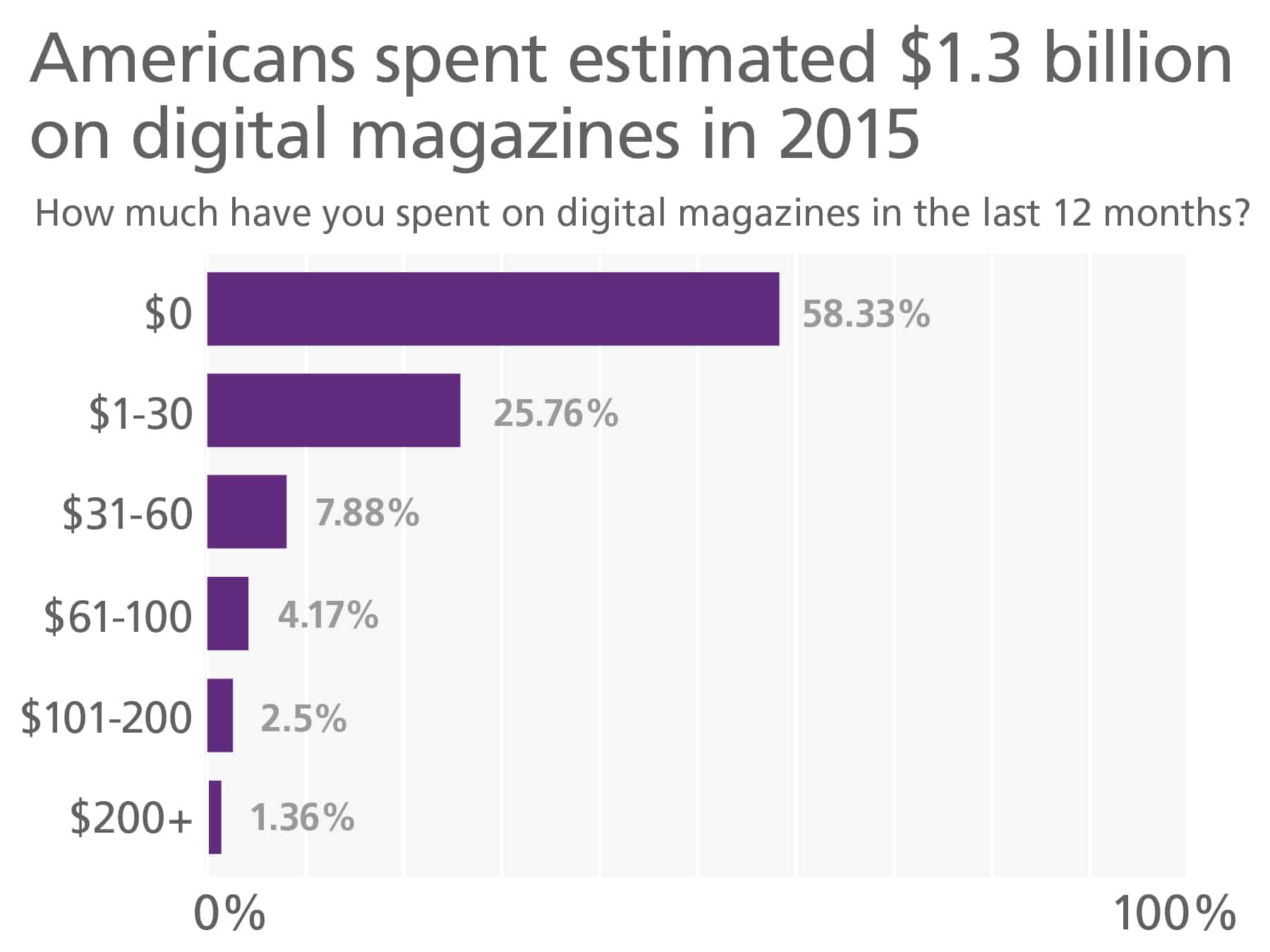The rise of the digital magazine
In July 2015, the CEO of Flipboard® announced that the digital newsreader had 70 million monthly active users, an increase of 45 percent from the beginning of the year.[1] Thanks to mobile users who expect more options for news and entertainment, as well as software that makes it easier for graphic designers to create digital magazines without extensive training, the trend is for more and more digital magazines to be read on mobile devices.
In fact, the amount of time spent consuming digital media has climbed exponentially since 2008—from just 2.7 hours a day to 5.6 hours, and more than half of those hours are spent on mobile.[2] That, coupled with the ease of distribution for publishers, has given rise to the digital magazine.[3]
This Blue Paper® will explore the past, present and future of digital magazines, current trends, tools to develop them, and what businesses need to know if they want to include digital magazines as part of their content marketing strategy.
The history of the digital magazine
The digital magazine, still in its infancy, is merely five years old. To no surprise, its beginnings coincide with that of the modern tablet in 2010. At that time, only a small percent of the U.S. population owned one—3 percent to be exact. However, in just three short years, that percentage jumped to 34 percent, helping pave the way for digital magazines.[4]
Today, 55 percent of people own or have access to a tablet, and 73 percent of them use one to access articles online at least some of the time—one in five do so daily.[5] Furthermore, one in three U.S. adults with Internet access have read a digital magazine in the past 30 days (see Figure 1).
1 in 3 US adults read digital magazines
How many digital magazines have you read in the last 30 days?
- 63.21% have read zero
- 13.52% have read one
- 8.34% have read 2
- 5.35% have read 3
- 3.01% have read four
- 1.77% have read 5
- 4.8% have read 6+.

Figure 1: Number of U.S. adults that read digital magazines in the past 30 days[6]
Spending on digital magazines is projected to top $1.3 billion by the end of the year (see Figure 2).
Americans spent an estimated $1.3 billion on digital magazines in 2015
How much have you spent on digital magazines in the last 12 months?
- 58.33% spent $0
- 25.76% spent $1-$30
- 7.88% spent $31-$60
- 4.17% spent $61-$100
- 2.5% spent $101-$200
- 1.36% spent $200+.

Figure 2: 2015 dollars spent on digital magazines [7]
It’s not to say you should put all your eggs in one basket, however. Even the majority of news magazine sales—both single copy and subscription—are still highest in print. However, some fare better than others when it comes to selling digital versions. For instance, 30 percent of Rolling Stone’s® newsstand sales come from digital. And just last year, New York Magazine quadrupled its single copy digital sales.[8]
Benefits of adding a digital magazine to your content strategy
An effective content strategy aims to engage and provide value to readers. Done well, content marketing can improve customer retention, increase word-of-mouth marketing and, in turn, attract new customers.[9] If you’re looking for new ways to deliver fresh content to your customers, you may want to look to digital magazines. Here are some of the reasons why:
- Deliver fresh content: Digital publications provide fresh and relevant content. The auto-update capabilities ensure your readers are in the know with what’s going on in your company.[10]
- Expand distribution: Digital publications can be distributed to anyone, as long as the means to view it are available.[11] Considering the number of tablet owners is expected to surpass 1 billion this year, the sky’s the limit.[12]
- Improve readership: The anytime, anywhere access provided by digital magazines can actually improve readership rates. Approximately 58 percent of digital subscriptions are read the same day they arrive.[13]
- Lower costs: Gone are the days of losing revenue due to unsold copies of printed publications.[14] A digital magazine has no per copy publication cost which equates to no additional waste for unsold copies.
- Ability to measure: Uncover your readership’s demographic information and measure which articles are read most, for how long, on which days of the week and more.[15]
- Flexibility: Digital magazines have very few limitations and can be easily customized without additional costs or changes to layout.[16]
The benefits of digital are not limited to publishers alone. There’s a reason this medium is increasing: consumers like it. Here’s why:
- Immediate delivery: 42 percent of digital magazine readers cite immediate delivery as this medium’s most important attribute.[17]
- Easy-to-carry: 40 percent say the portable, easy-to-carry nature of digital magazines is a top selling point.[18]
- Sustainable: Many digital magazine readers prefer digital to printed content because it saves on paper.[19]
And finally, advertisers like them, too. Digital publications provide great opportunity for online advertisers. Readers who click on native ads have higher purchase intent than those who click on banner ads. In fact, 67 percent of digital magazine readers actually want to buy directly from magazine ads, and 62 percent directly from articles![20]
Page 1 of 3
